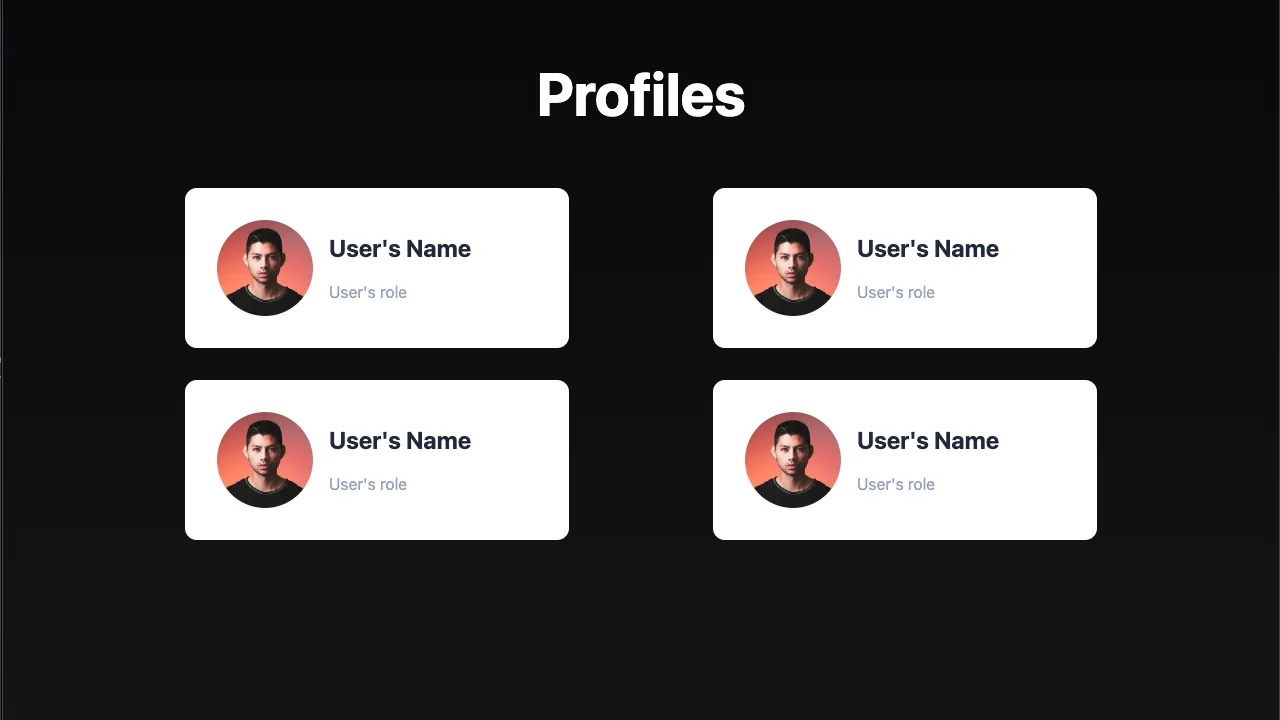Component props in React
What are props?
Section titled “What are props?”At the moment, our ProfileCard component looks great, but it is static.
It always displays the same information, no matter when it’s used.

This is not very useful. We want to be able to pass different data to the ProfileCard component so that it can display different profiles.
Props are a way to pass data to components in React. They are similar to arguments in functions. You can pass any data type to a component as a prop, including strings, numbers, arrays, objects, and functions.
Passing props to components
Section titled “Passing props to components”Let’s start with our simple Greeting component from the previous session:
function Greeting() { return <h1>Hello</h1>}Like our ProfileCard component, this component is static. It always displays the same greeting. Let’s make it dynamic by passing a name prop to it.
The props object
Section titled “The props object”When you pass a prop to a component, React stores it in a special object called props.
With functional components, you can access the props object as an argument to the component function.
Here’s how you can pass a name prop to the Greeting component:
function Greeting(props) { return <h1>Hello, {props.name}</h1>}Notice that we added a name prop to the Greeting component? We can now use the Greeting component like this:
Now, you can use the Greeting component like this:
<Greeting name="Alice" /> // Hello, Alice<Greeting name="Bob" /> // Hello, Bob<Greeting name="Charlie" /> // Hello, CharlieWhat happens if you don’t pass a prop that is expected?
Section titled “What happens if you don’t pass a prop that is expected?”If you don’t pass a prop to a component that is expecting one, React will just set the value of the prop to undefined.
For example, if you use the Greeting component above without a prop, look what happens:
<Greeting /> // Hello, undefined<Greeting /> // Hello, undefined<Greeting /> // Hello, undefinedIt is for this reason that Typescript is recommended for React projects.
Typescript and interfaces
Section titled “Typescript and interfaces”With Typescript, we can define something called an interface to define the shape of the props that a component expects.
Let’s modify the Greeting component to use an interface to define the shape of the props it expects:
interface GreetingProps { name: string}
function Greeting(props: GreetingProps) { return <h1>Hello, {props.name}</h1>}Destructuring props
Section titled “Destructuring props”In the Greeting component, we used the props object to access the name prop. This is a common pattern in React.
To make the code cleaner, you can use destructuring to extract the name prop from the props object:
interface GreetingProps { name: string}
function Greeting({ name }: GreetingProps) { return <h1>Hello, {name}</h1>}Because we used destructuring to extract the name prop from the props object here, we can now access the name prop directly without write props before it.
Passing multiple props
Section titled “Passing multiple props”You can pass multiple props to a component. Here’s an example:
function UserCard(props) { return ( <div> <h1>{props.name}</h1> <p>{props.bio}</p> </div> )}You can use the UserCard component like this:
<UserCard name="Alice" bio="Frontend developer" /><UserCard name="Bob" bio="Backend developer" /><UserCard name="Charlie" bio="Fullstack developer" />Refer back to this guide when working on the challenges below.
Challenges
Section titled “Challenges”Solution
Section titled “Solution”Watch the video below to see how to solve the challenges:

